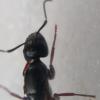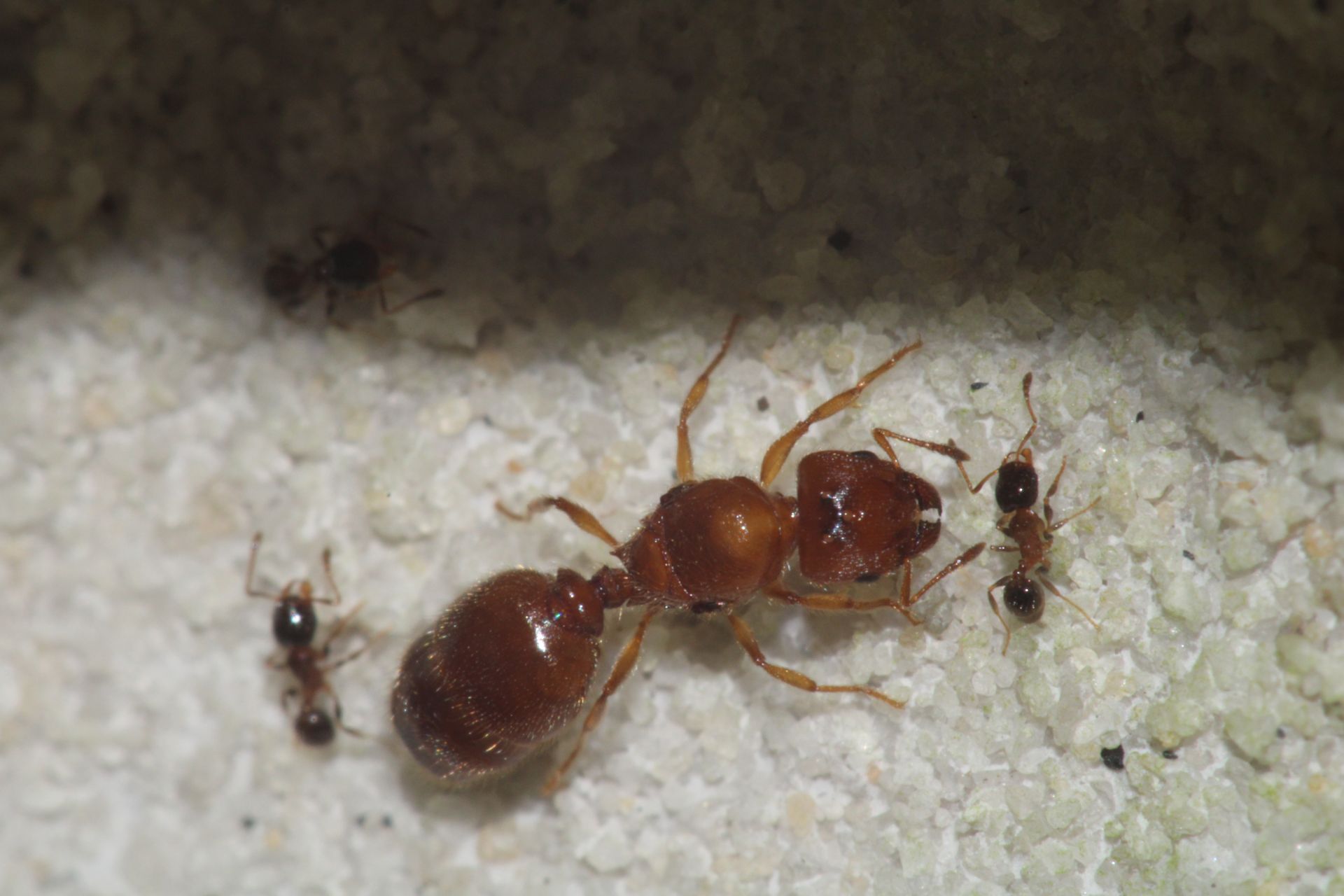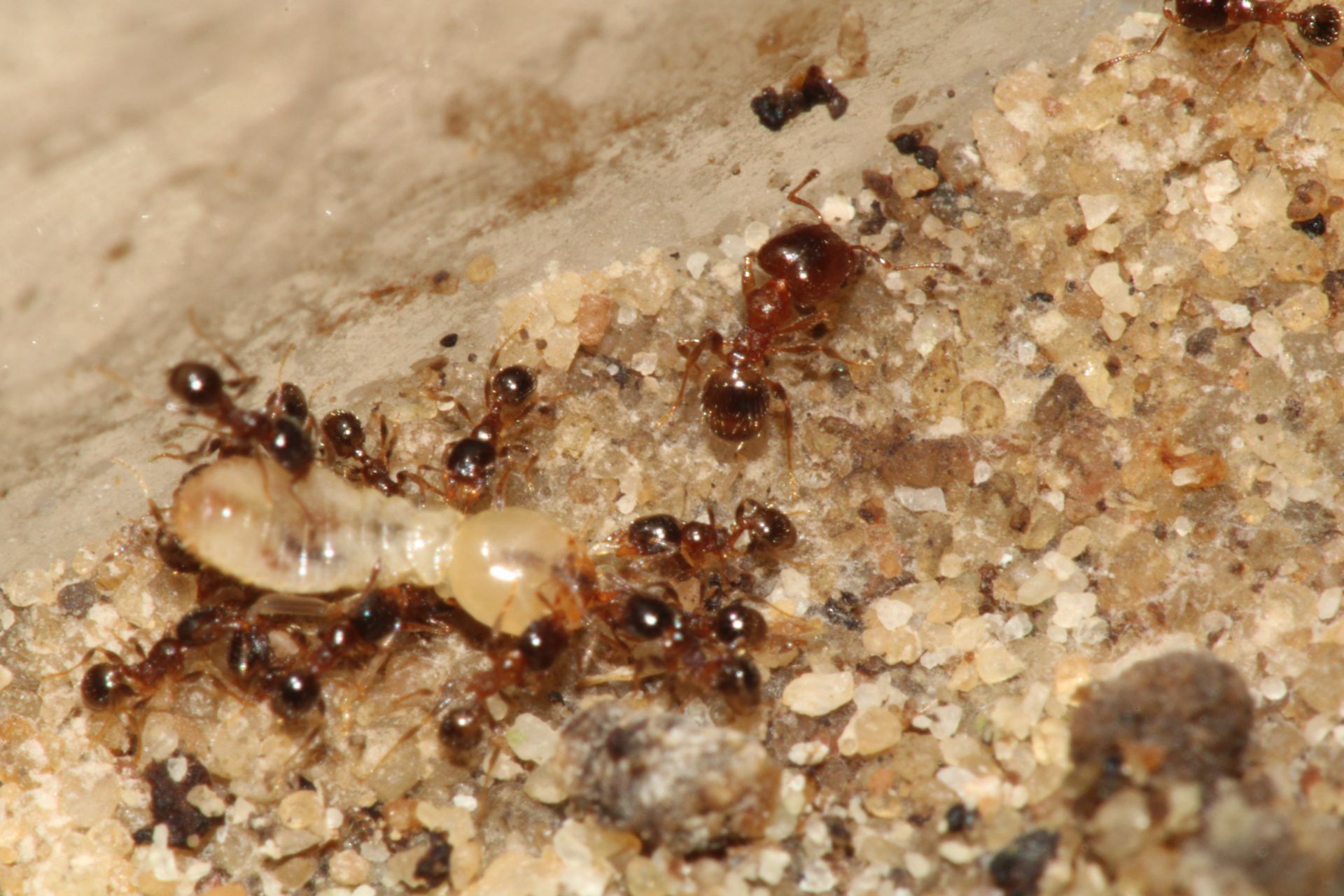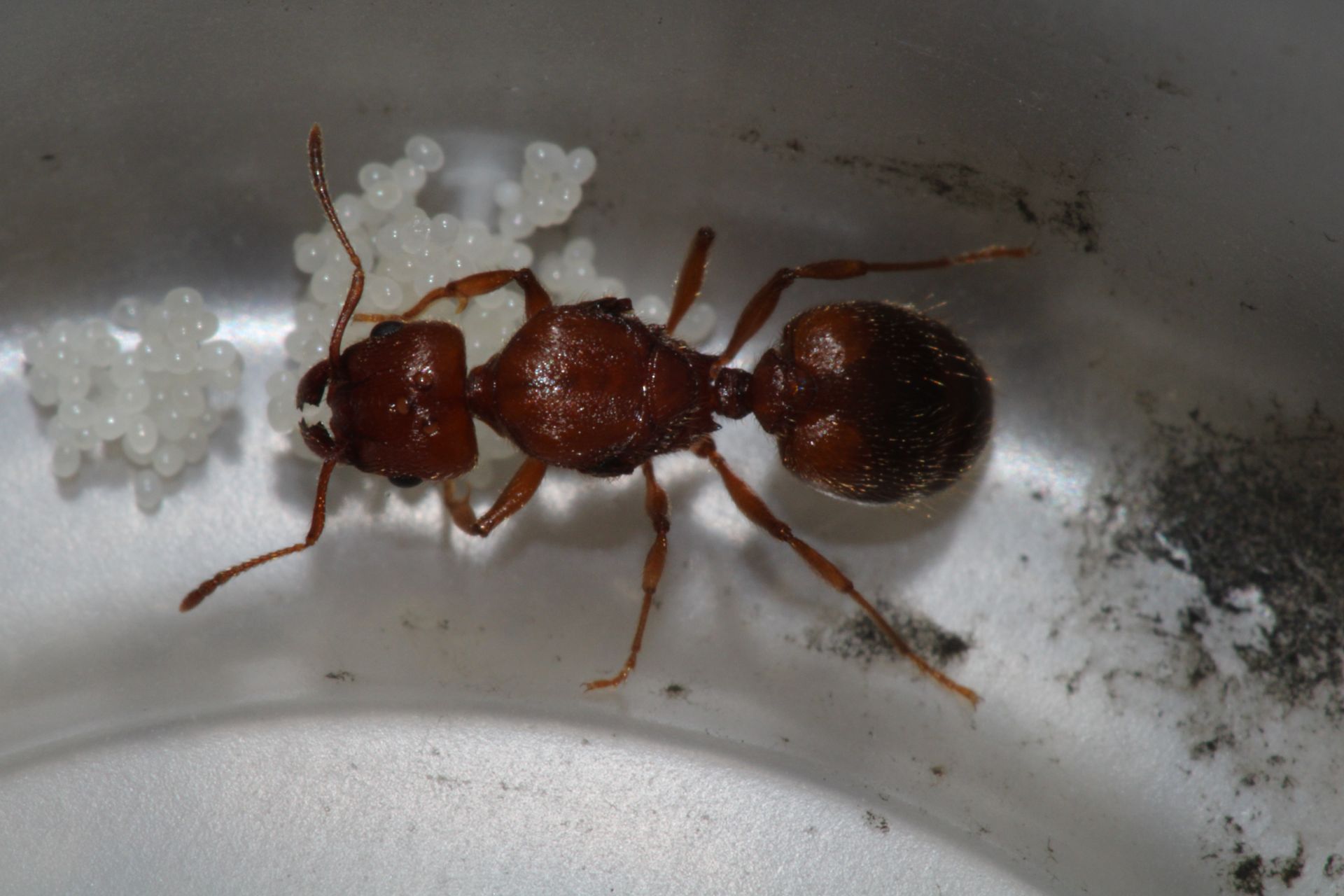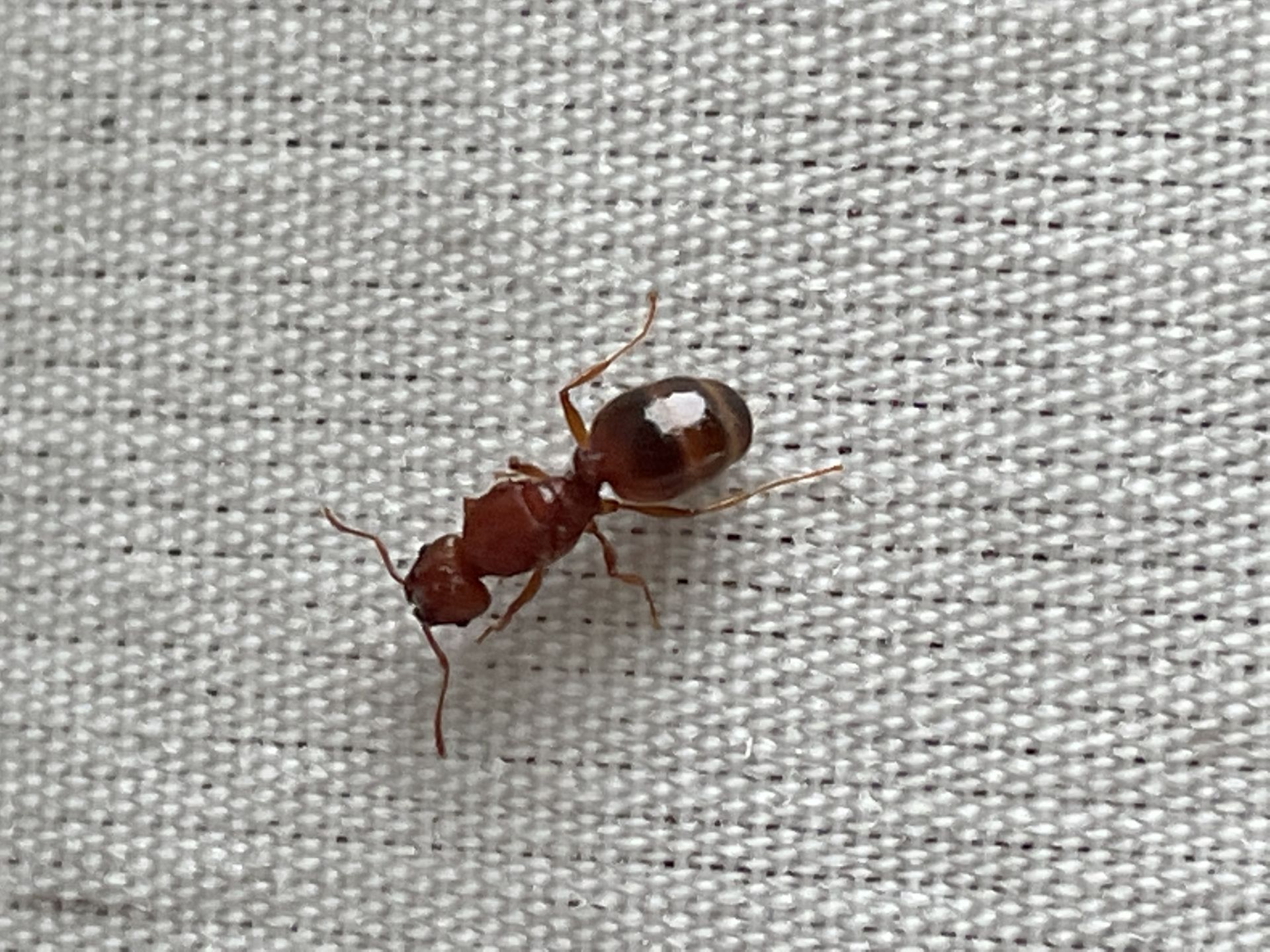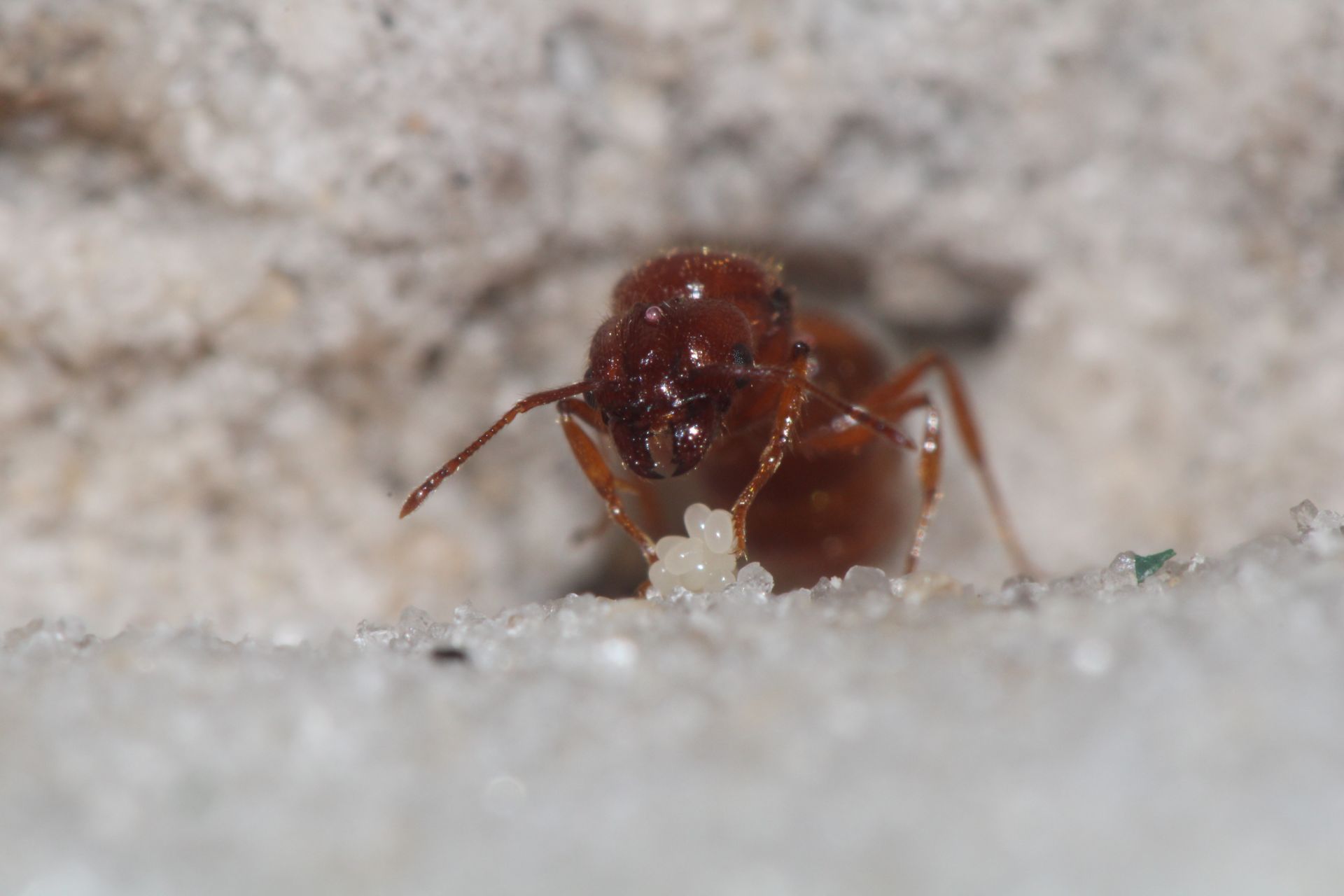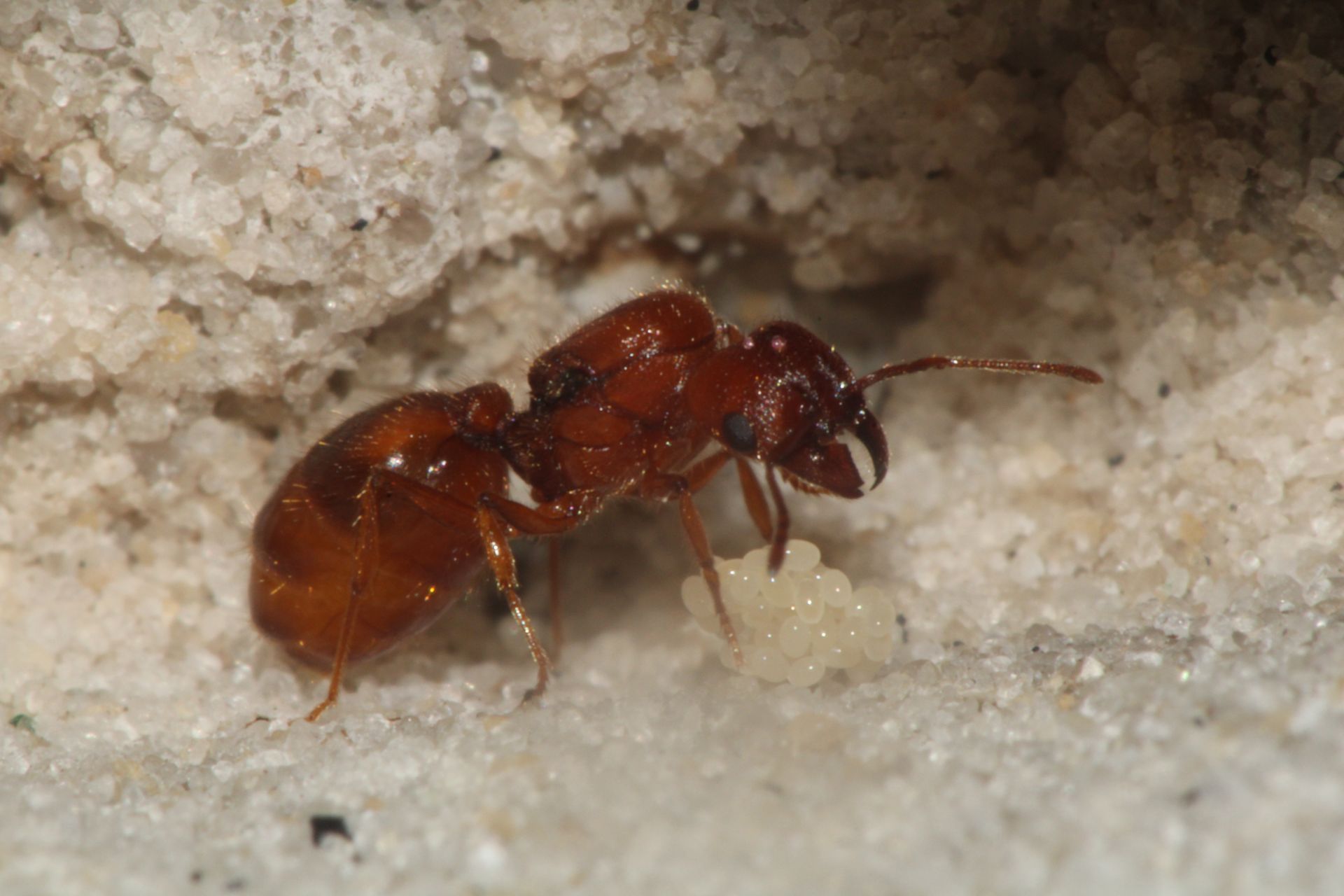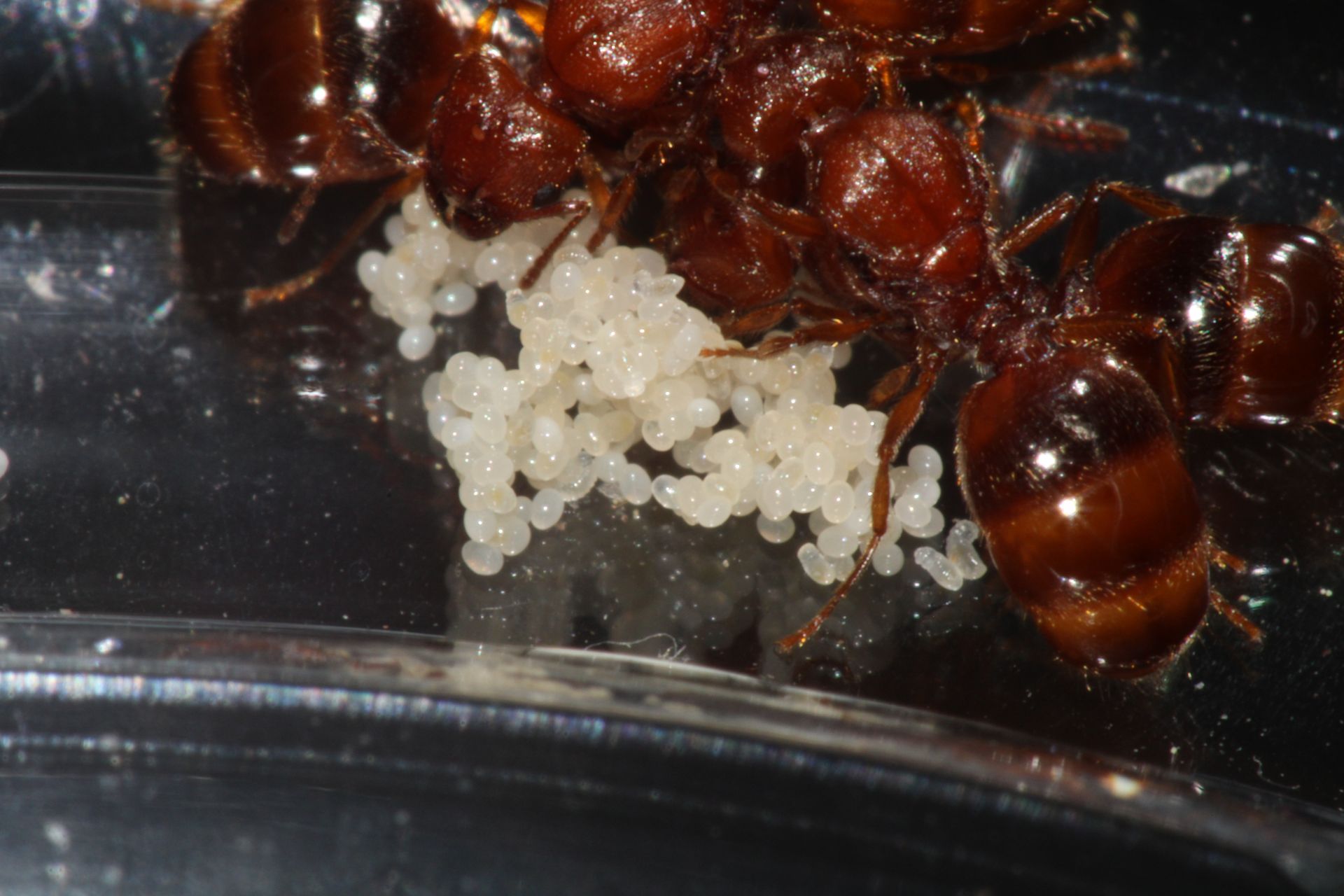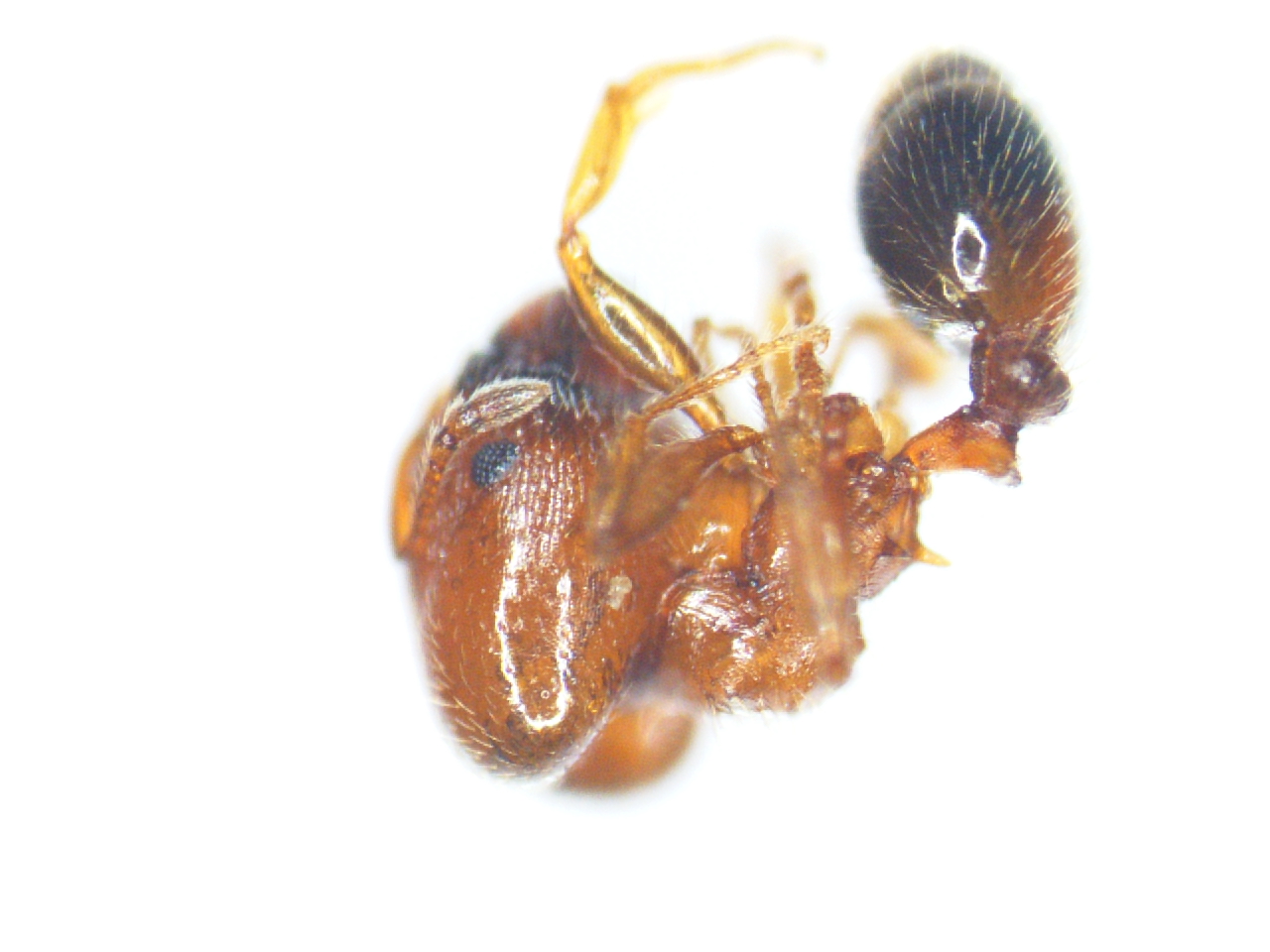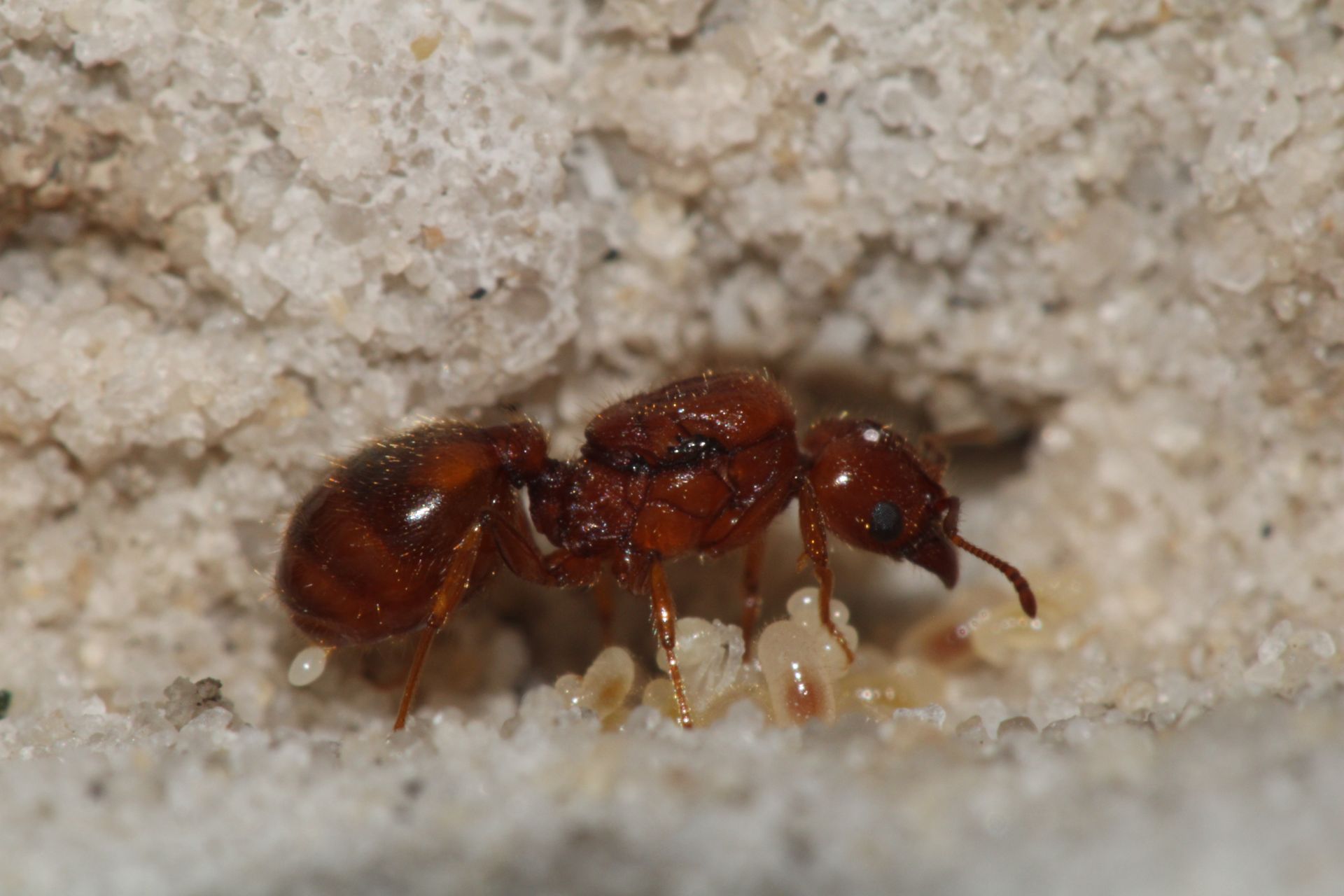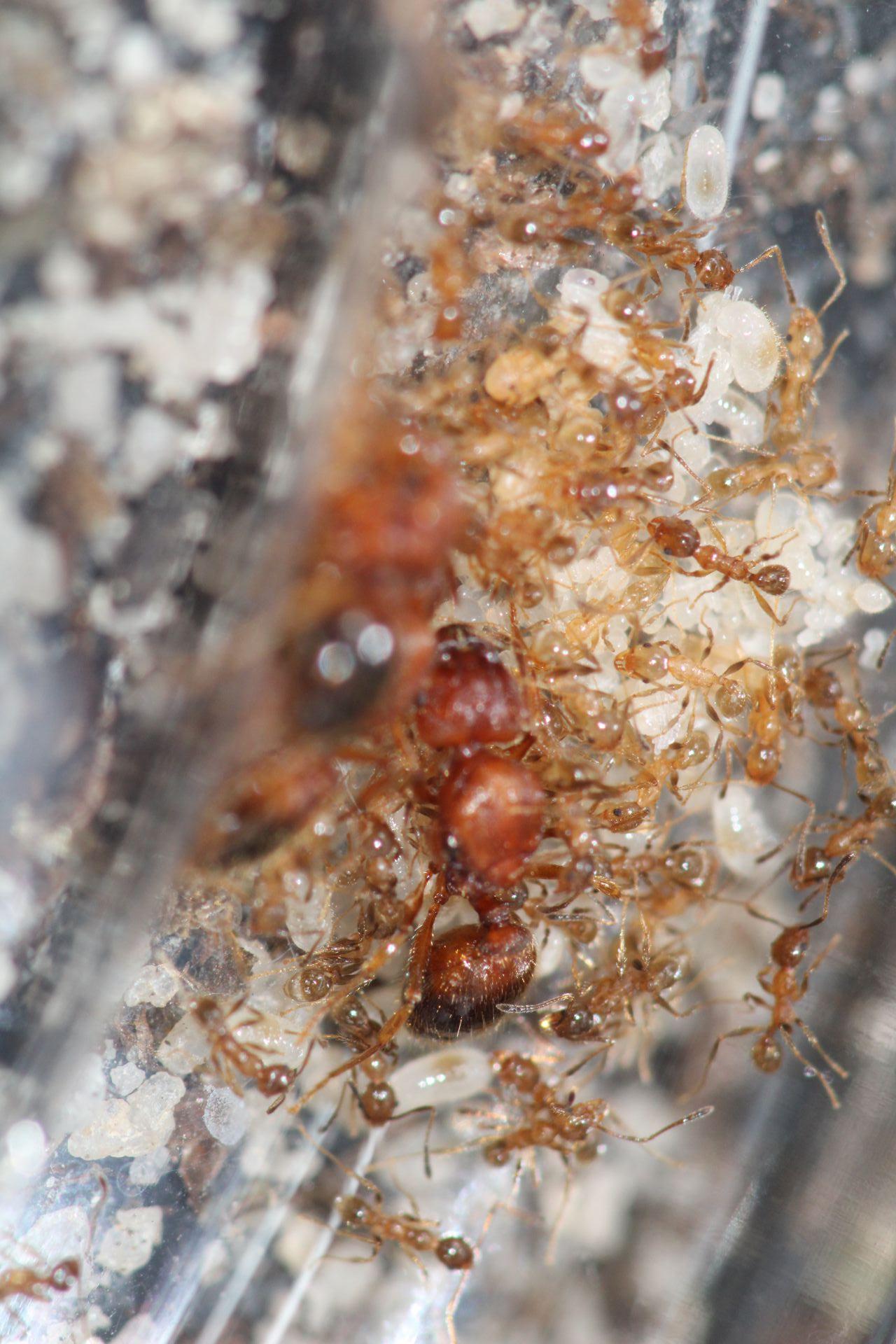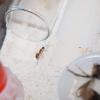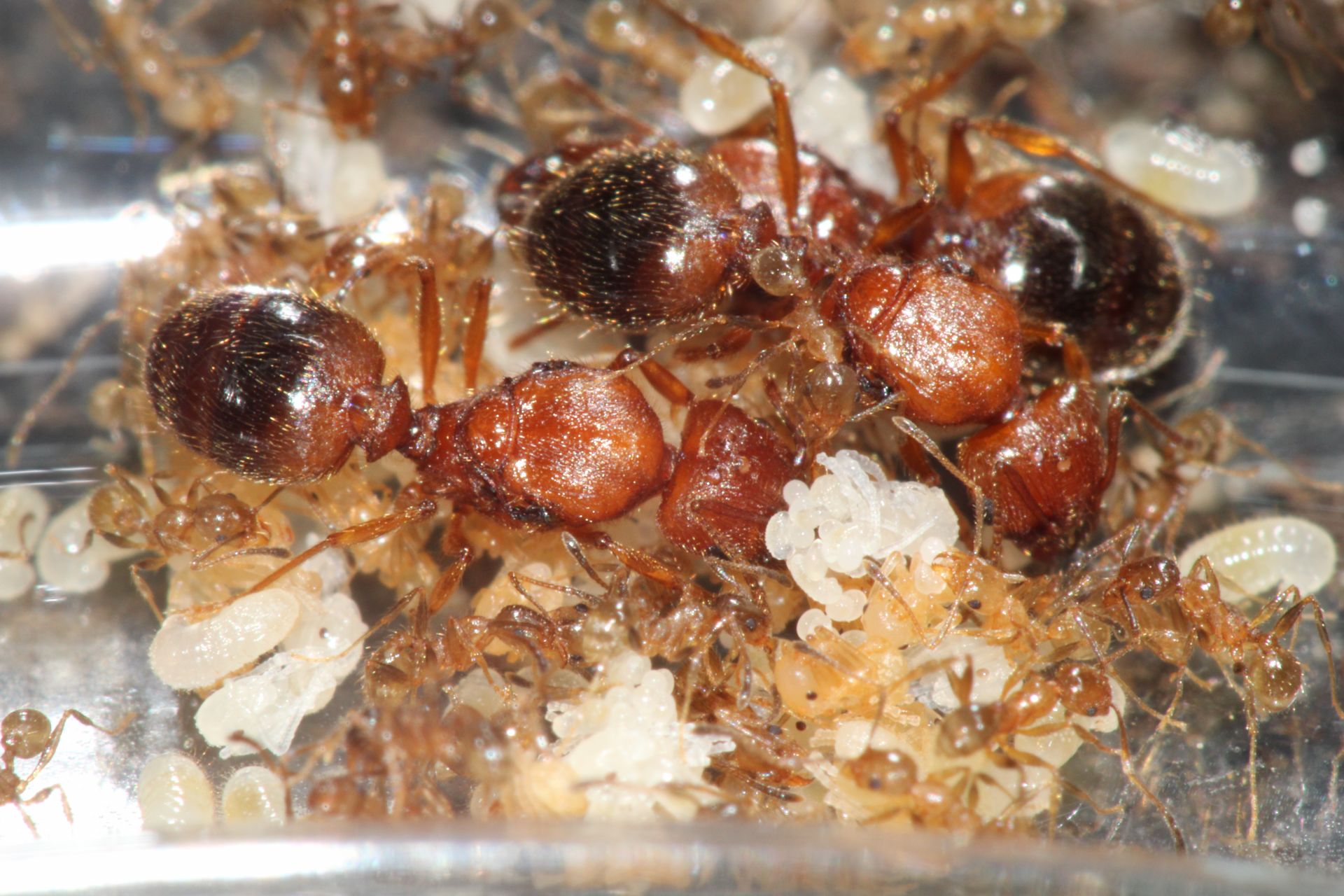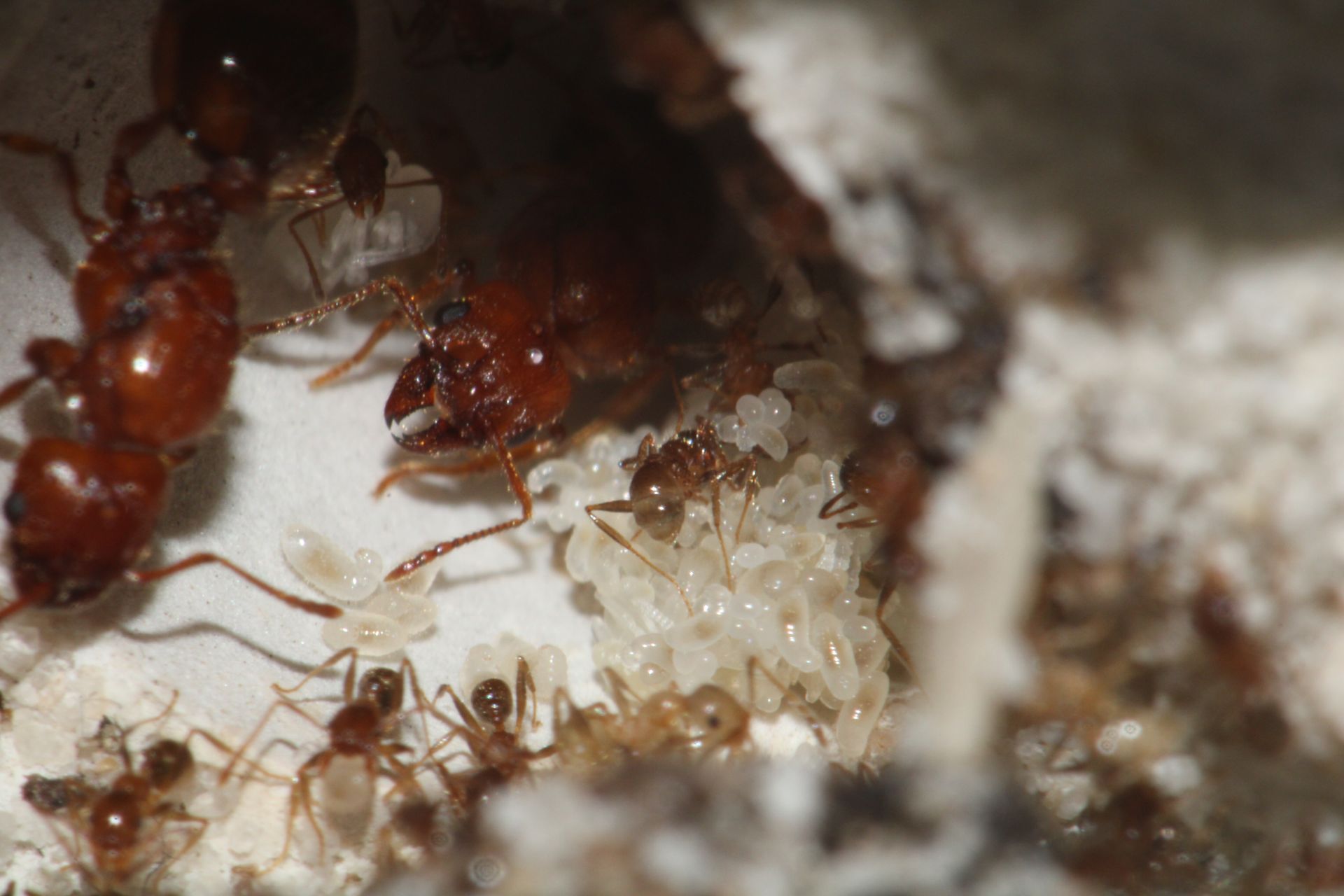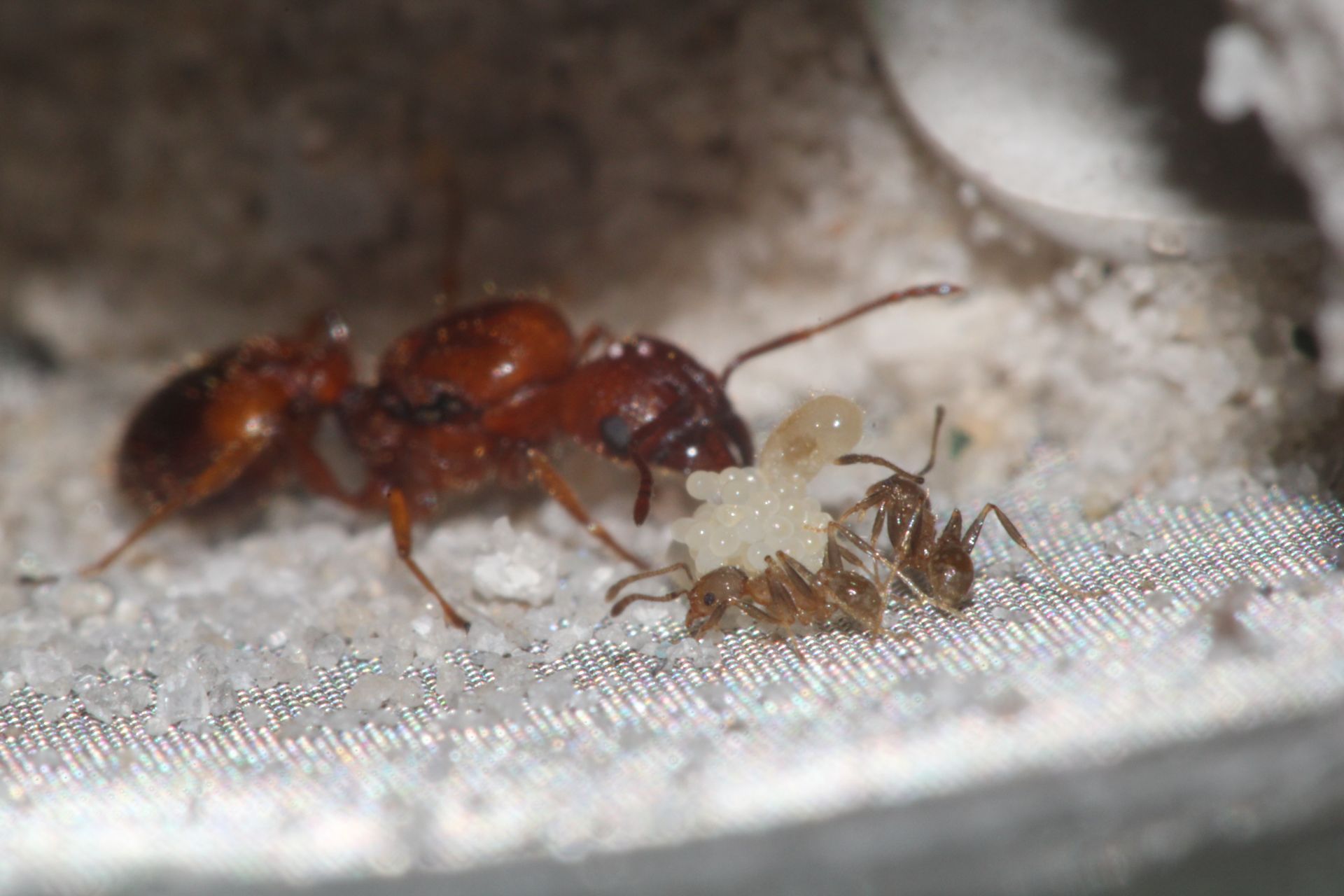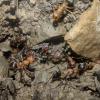This summer, I discovered that I have a number of Pheidole species in the yard (central NC Piedmont area). From June onward I collected a number of these mostly at blacklight at sunset or sunrise (I have 40 or so total incipient nests in vials, cups, etc. but they are almost all of one species I think, P. bicarinata - which flies in small numbers almost every humid night at dusk - the others are much rarer. At the end of the day, the most exciting one in terms of behavior, growth, and the like, for me – is Pheidole dentata. So far, aside from this queen, I have six P. bicarinata I will keep (3 each of what appear to be two queen color varieties, to see what's going on there), one alate-but-fertile queen P. tysoni, and one queen P. dentigula of unknown status (she is in a cup of soil - this is the only way I could keep the several of these I found, alive, after learning the hard way about this species and vials - at least for me they need saturated air to survive more than a day or two, which makes sense for an animal that lives in deep shady woods).
I first collected two of these on the morning of June 29th. This was a crazy ant night - 15 species of ants came to the light. It was the single best flight-night of summer.
The third female showed up as I was packing up the light setup one morning – July 10th.
I missed capture of a fourth female on the 18th of July - she flew past me as I was checking the light at around 6:15 AM; I winged her with my hand, but she rolled a bit and kept flying back to the woods. Tough buggers.
The first and third queens both met unfortunate ends – the first died in a mold outbreak because I fed her too much and she left a small caterpillar carcass for too long (she had laid over 100 eggs, and the more I fed her, the more she laid. Lesson learned). The third died in a truly tragic event, wherein while cleaning one of the containers with my son, the queen managed to get herself between the glass and the magnet of a THA mini-hearth just as we closed it – dead. But, her workers were preserved in EtOH and kindly gave their lives to allow me to key them out. I had no idea what they were until then – so they did help in that way. The difference between these animals and all the other Pheidole queens here, which are mostly in the 4-5 mm range, is sheer size - this animal was almost twice as large, at 8mm, and she's robust rather than slender. Here - compare her on the left to the Aphaenogaster fulva queen on the right, for those of you familiar.
Thus, the journal is really about just the one queen who remains. However, she is doing so well, it’s just as well I only have the one. I imagine this colony is going to become enormous, and a bit of work to maintain, given the rate at which they are growing and eating. I have since found a few colonies on my property - based on baiting them out the colonies contain at least 1,000 minor workers each, if not more (very likely more since I cannot imagine all the nest population comes out just for snacks). The nests are nondescript holes in the ground, sometimes a few holes together, with no obvious sign of excavation or trash or... anything. When you bait them, though - 100s of minors emerge within minutes. Majors follow for tough-to-chew items like cutworm pupae or big crickets.
Here goes.
The queen herself – two mornings after capture. Note already 25+ eggs - an egg-laying machine, this one.
Soon, a huge pile of eggs – not as many as her ‘sister’ that passed, but a lot nonetheless.
After only 28 days – nanitics. At this point I moved her into a mini-hearth.
Today – one major, 35-40 minors of varying ages, dozens of pupae, larvae, and a pile of 50 or so eggs (not all obvious from this picture):
The neat thing is – this is all at a warm room temperature (my upstairs cool setting is 76F – so June-September the upstairs never gets more than a degree or two cooler than this, but it doesn’t get too much warmer either). Unlike a lot of other ants, which either live on heat tape, etc., these have promise to do well even in the cooler months, as at least so far they show no sign of slowing down due to the shortening daylight. This is promising!
She needs a name. Seems a lot of the good mythological ones are taken around here... ![]()




